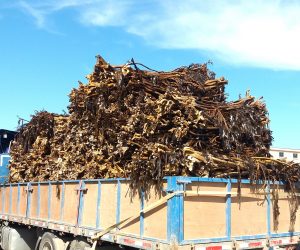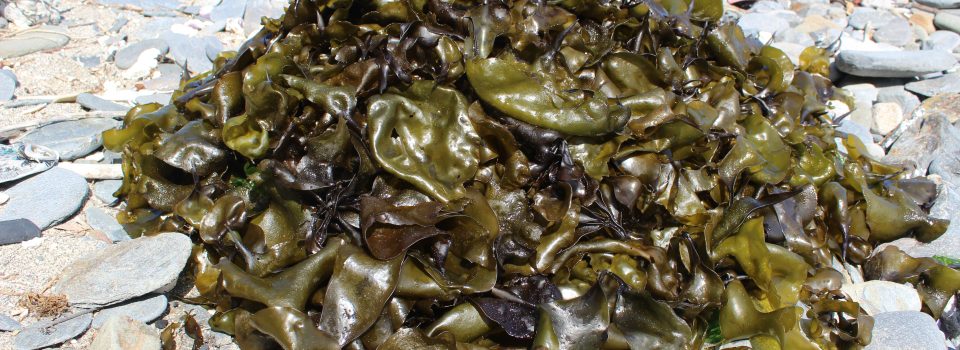IFOP will implement a monitoring network for brown algae from the Arica and Parinacota Region to the Coquimbo Region to obtain indicators that contribute to management.
January 22nd, 2021
Fishing Development Institute(IFOP) was awarded FIPA 2020-34 project “Monitoring plan Proposal for status and extractive activity of brown algae in the maritime area of the Arica and Parinacota Region until the Region of Coquimbo design and implementation ”, which will allow gathering relevant information for management.
The project general objective that will last 28 months is; to implement and evaluate a design for monitoring population, fishing, social and basic economic indicators associated with huiro negro brown algae, huiro palo and foating huiro fishery resources in the regions ranging from Arica and Parinacota to Coquimbo and the sector of Bahía Chasco, which allows evaluating and proposing administration and management measures, with the least possible uncertainty.
Specific Objectives are:
- Proposal of a sampling design that allows the availability of population, fishing, social and economic indicators for the huiro negro, huiro palo and / or float resources in maritime areas of the macro northern zone of the country between the regions of Arica and Parinacota and of Coquimbo.
- Implement, on a pilot scale, the sampling design in the resources and the selected areas to monitor the proposed indicators.
- Evaluate design and recommendations / suggestions regarding pilot monitoring spatial scaling.
- Propose decision rules associated with administration and management plans management measures based on battery of indicators evaluated.
Pablo Araya IFOP benthic researcher and head of the project explained “It is a highly anticipated project by those who are working on brown algae (huiros) productive activity sustainability.. In recent decades, there has been a productive activity rapid growth in the north of the country, especially between Arica and Parinacota and Coquimbo regions, currently showing high levels of landings, which has caused interest and concern for conservation of natural grasslands, given their high importance for marine ecosystems.
The administration has established various norms for a rational and sustainable exploitation, among which numerous areas of management and exploitation of benthic resources (AMERB) stand out in specific sectors along the coast and management plans in extensive free access areas. There is one for each region of the north, in addition to a specific one in Bahía Chasco within Atacama region. Those plans consider different administration measures, aimed at conservation and sustainable extraction of these resources, but their correct operation and control are difficult due to productive activity particular characteristics.
Management Plans have difficulties in evaluating implemented measures, since there is no permanent monitoring that generates inputs to generate indicators, both of the state of various huiros and of the activity carried out on them. Although there has been research on brown algae, in the extractive field they have been oriented to direct evaluations carried out to know grasslands state at a certain time and have allowed us to estimate exploitable biomasses that do not explain landing in some regions, with high uncertainty in their estimate, given the large spatial scale where macroalgae are distributed. This project is aimed at identifying bounded areas or sectors, representative of each resource and region, that allow informative data collection, both quantitative and qualitative, capable of providing indicators to monitor and explain grasslands of the brown algae extractive and population dynamics subject to exploitation in northern Chile ”.
Pablo Araya commented “Personally I am honored and proud to be able to lead the work team that made obtaining this project possible. The initiative brought together professionals who lead high-level benthic research groups within our institution, in addition to integrating consultants led by professionals with vast experience in brown algae population evaluations in the study area. Most of the team with an active participation in management. There is great optimism in being able to count on the extractive sector collaboration in the project development. Active participation will be promoted in data gathering, extractive activity recording and contributions in results discussion from the initiative. Productive activity sustainability is only possible with all the actors collaborative and multidisciplinary work ”.
In general, the project includes three stages:
1) Implementation; where monitoring sectors must be identified, selected and defined (pilot monitoring network), for this a review of existing information is needed, local knowledge recovery and samplers recruitment.
2) Monitoring execution, bio-fishery collection, population and socioeconomic data from monitoring selected sectors.
3) Analysis, established monitoring network evaluation and potential continuity, key indicators selection and decision rules proposal that allow progress in management of these fisheries within each management plan.
